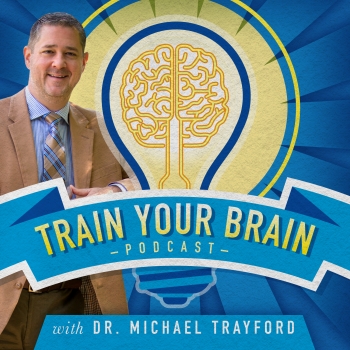Podcast: Play in new window | Download

Good morning and welcome to Episode 66 of the Train Your Brain Podcast with Dr. Michael Trayford. Every Monday we produce a 30-minute episode. Tuesday through Sunday we produce episodes with five-minute tips. Every episode of the Train Your Brain Podcast features a tip, so you can receive pointers 365 days a year that will help enhance the performance of your brain!
Today Dr. Trayford shares brain training tip number 66. Dr. Trayford loves sushi and eats it often. If you also eat a good amount of fish, you might want to have your heavy metal levels tested. There are a few different ways to test these levels, so talk to your doctor about what is the best way for you to determine these numbers. There are ways of flushing them out. They are toxic to the body, so we definitely want to be aware of our heavy metal numbers.
This tip is about heavy metals. It’s important to know and understand a little bit about heavy metals in your body. This really hits home for me right now. I recently had my heavy metals checked out and found out that my mercury level is sky high. Also my antimony levels were also very high.
There are two factors related to heavy metals in the human body. How you’re getting them in and how you’re getting them out. Your body does a good job of detoxifying and pulling out what we put into it. But there are certain things that the body has a hard time eliminating. Some of these things can be very detrimental for the brain and body.
In my case I attribute my situation to be related to high sushi intake. I love sushi and I’ve eaten it most of my adult life.
There are charts you can find on line that show you the average mercury content of a fish. In general a large fish that takes it’s primary diet from eating other fish, especially in cold water, will tend to have higher levels of mercury.
There are some challenges with this. Things like tuna have been associated with heavy metal concentrations.
We’re also seeing increased levels of arsenic, which is found in many rice sources. It comes from the ground. People have been looking for additional sources of protein intake and they turn to soy and rice based products. A lot of medical foods now have some type of rice or protein component. There’s a move away from that now because there are sources of arsenic showing up in rice.
Heavy metals also extend to things like cadmium, antimony, and lead. There are these other things we’ve talked about. The bottom line is to get your heavy metals checked.
There are several different ways you can do this. There might be a little confusion between the clinical and consumer world.
The test used to involve testing samples of your hair and nails. Samples were sent to a lab.
If you’re seeing heavy metals in your hair and nails, your body is already doing a decent job of eliminating these metals from your system. What you really need to be looking at is the level of heavy metals being stored in the body in fats and other tissues. Because those are the heavy metals that the body is struggling to eliminate.
Have you heard of chelation?
Jason: Yes I have actually. No I’ve heard of Keloid scarring.
Chelation involves introducing a substance to the body that binds to another substance and pulls it out of the body. There are several different kinds of substances. They are all designed to free up heavy metals and then you can look at the urine and see how much heavy metal is showing up in your urine sample over time.
There is a little bit of controversy. Certain states won’t allow this type of testing. But there are certain types of chemicals. One is called EDTA and another is DMSA, or DMPS.
These are basically abbreviation for long chemical names.
DMPS is considered to be one of the most aggressive and controversial. There is some states that don’t allow this type of testing. It does a very good job of binding and releasing mercury and other heavy metals, so they can be eliminated from the body and measured in the urine.
The process of chelating is something we will get into in future tips. Understanding your heavy metals should be towards the top of the list. Because these metals will interfere with nerve transmission, they can cause inflammation and over time they can give you a brain that does not work very well at all.
Get your heavy metals tested.
If you have any concerns regarding the information and applications discussed in this podcast, please consult your physician and a doctor who is experienced in functional neurology. Michael Trayford DC, DACNB is available for consultation by calling (828) 708-5274. Thanks for listening. Continue reading →


